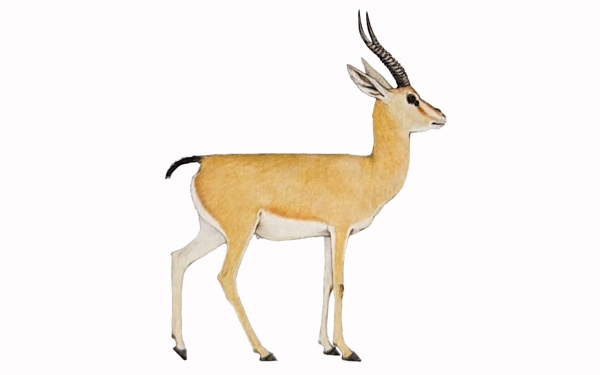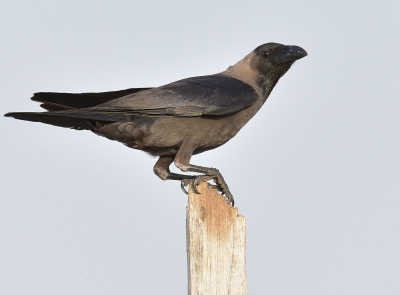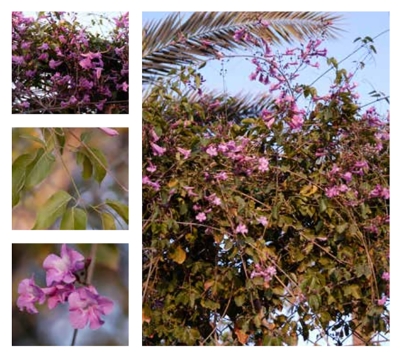
Saudi Gazelle (Gazella Saudiya), also known as Arabian gazelle and Afri, is classified under the species Gazella dorcas. It is a subspecies of Gazella dorcas that has become extinct due to over-hunting. There are seventeen species of gazelles found in Africa from south to north, and in most of Asia and eastern China, three of which have become extinct, and the rest are threatened with extinction.
Saudi gazelle formerly existed in the area between Kuwait and Jordan across the northern and central parts of the Arabian Peninsula, and along the western fringe around the Empty Quarter Desert to the Republic of Yemen.
Classification of Saudi gazelle
Saudi gazelle is classified under the species Gazella dorcas, and it was named Gazella dorcas saudiya in 1969. The last sighting of Saudi gazelle was recorded in 1970. It was officially listed on the International Union for Conservation of Nature Red List under (Extinct category) in 2008.
Efforts continued to find Saudi gazelle in some herds. However, all genetic studies conducted on samples collected from those herds indicated that those animals did not match Saudi gazelle or were hybrids.
The extinction of Saudi gazelle
In the 1980s, Saudi gazelle was reported to be extinct in the wild, as it formerly occurred on gravel and sandy plains, either singly or in herds of up to twenty. Most sightings of the Saudi gazelle were recorded in the western part of the Kingdom of Saudi Arabia. Despite reports of the Saudi gazelle's extinction, subsequent reports of captive specimens in collections in the Arabian Peninsula have been shown to refer to other taxa or to hybrids. Dorcas gazelle is considered one of the most widespread gazelles species inhabiting both the northern and southern regions.
In 2022, the National Center for Wildlife in the Kingdom announced that Saudi gazelle had become extinct in the Kingdom.
Specifications of Saudi gazelle
Saudi gazelle tends to have a reddish color, unlike sand gazelle"Reem", which tends towards a pale yellow color, and mountain gazelle"Idmi", which leans towards a mountainous hue. Additionally, there are differences in size and horn shape, with a preference for open gravelly environments.
Its height ranges from fifty-five to sixty-five cm, and its weight is between fifteen to twenty kg for both males and females. It is distinguished from mountain gazelle by its coat adorned with red markings. It has longer and straighter horns compared to other Arabian gazelles -mountain gazelle (rocky) and sand gazelle- that curve at the tips. It also has a black spot on the nose, long ears, short legs, prominent knees, and a short black tail. This species lives where Acacia trees grow in the eastern mountains of the Hejaz, as well as in grasslands and desert lands, with no existence on the southeastern side of the Arabian Peninsula.
Saudi gazelle in rock inscriptions
Since the Stone Age, gazelles have been a source of food and warmth, prompting humans to hunt them in both the Middle East and the Arabian Peninsula. This rush contributed to making it a wilderness icon depicted artistically among the most famous rock drawings in the Arabian Peninsula, which included many ancient inscriptions reflecting the presence of gazelles and oryxes in the Arabian area. Most of the gazelles were depicted in symbolic inscriptions or scenes where they were hunted by hunting dogs or archers.
Saudi gazelle is considered one of the animals of ancient appearance and spread in the Arabian Peninsula since the Hellenistic era until now, leaving a vast legacy of rock drawings and inscriptions in several eastern, western, southern, and northern areas of the Arabian Peninsula.
Hail Province in the north of the Kingdom has rock inscriptions on the mountain faces scattered in a rugged area located 640 km to the northwest of the Saudi capital, Riyadh, in al-Shuwaymis Center. Those inscriptions include various forms of gazelles domesticated by man. Some gazelles appear in life-size, indicating being domesticated by man in the Arabian Peninsula since early times and his dependence on hunting them.
Related quizzes
Related articles


